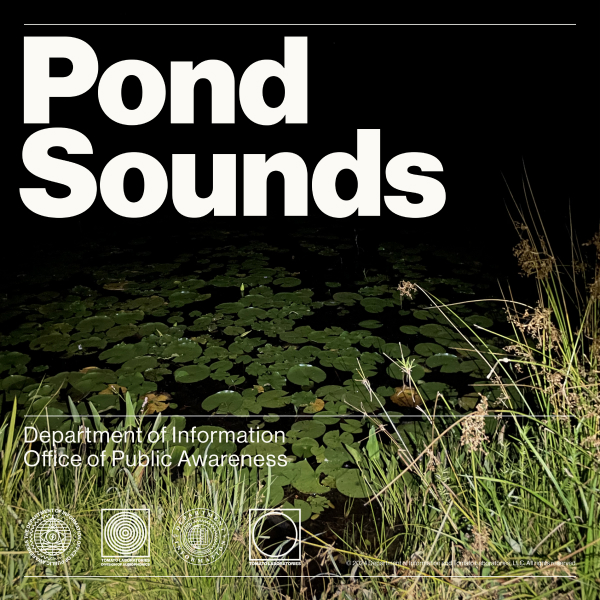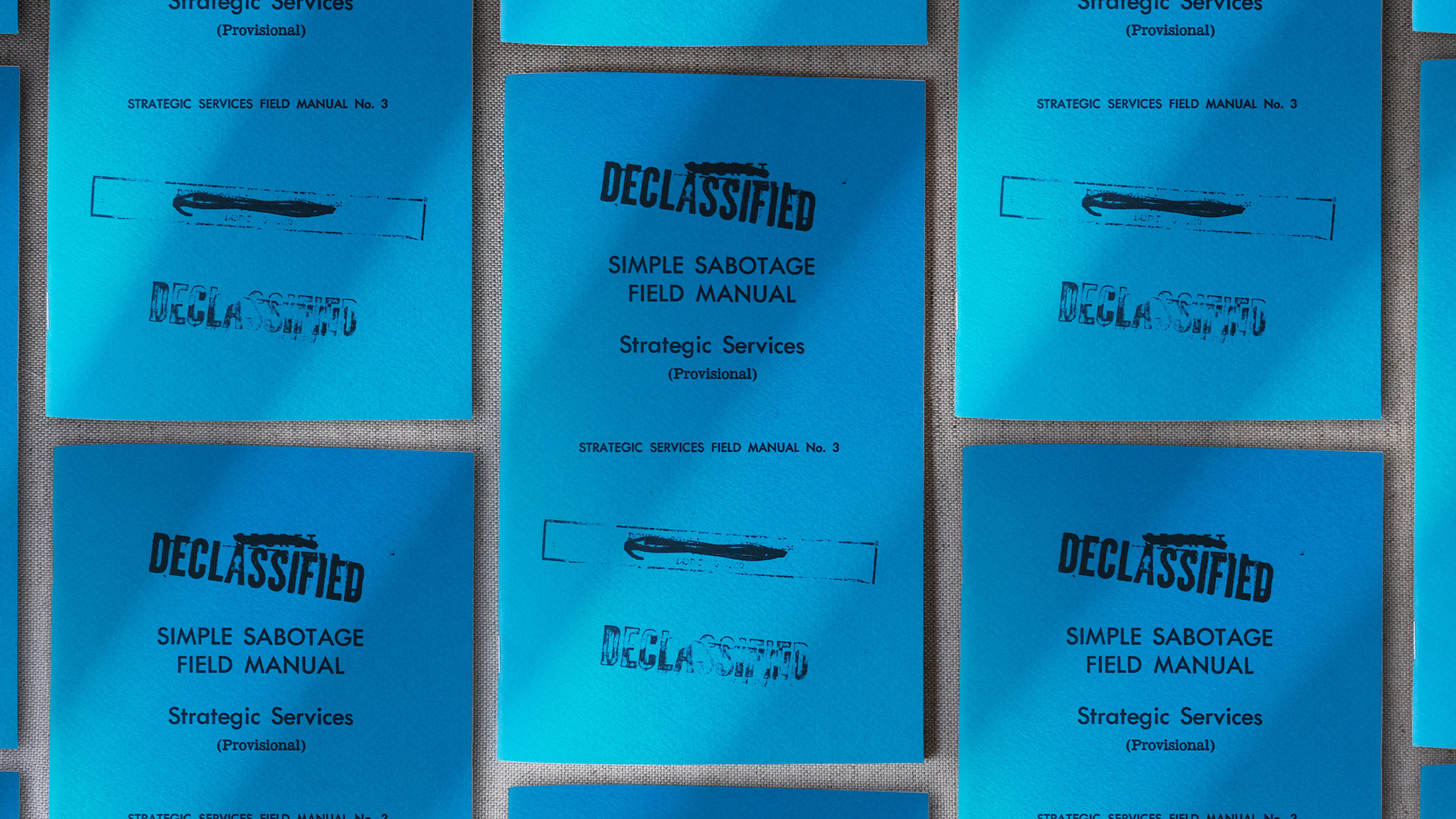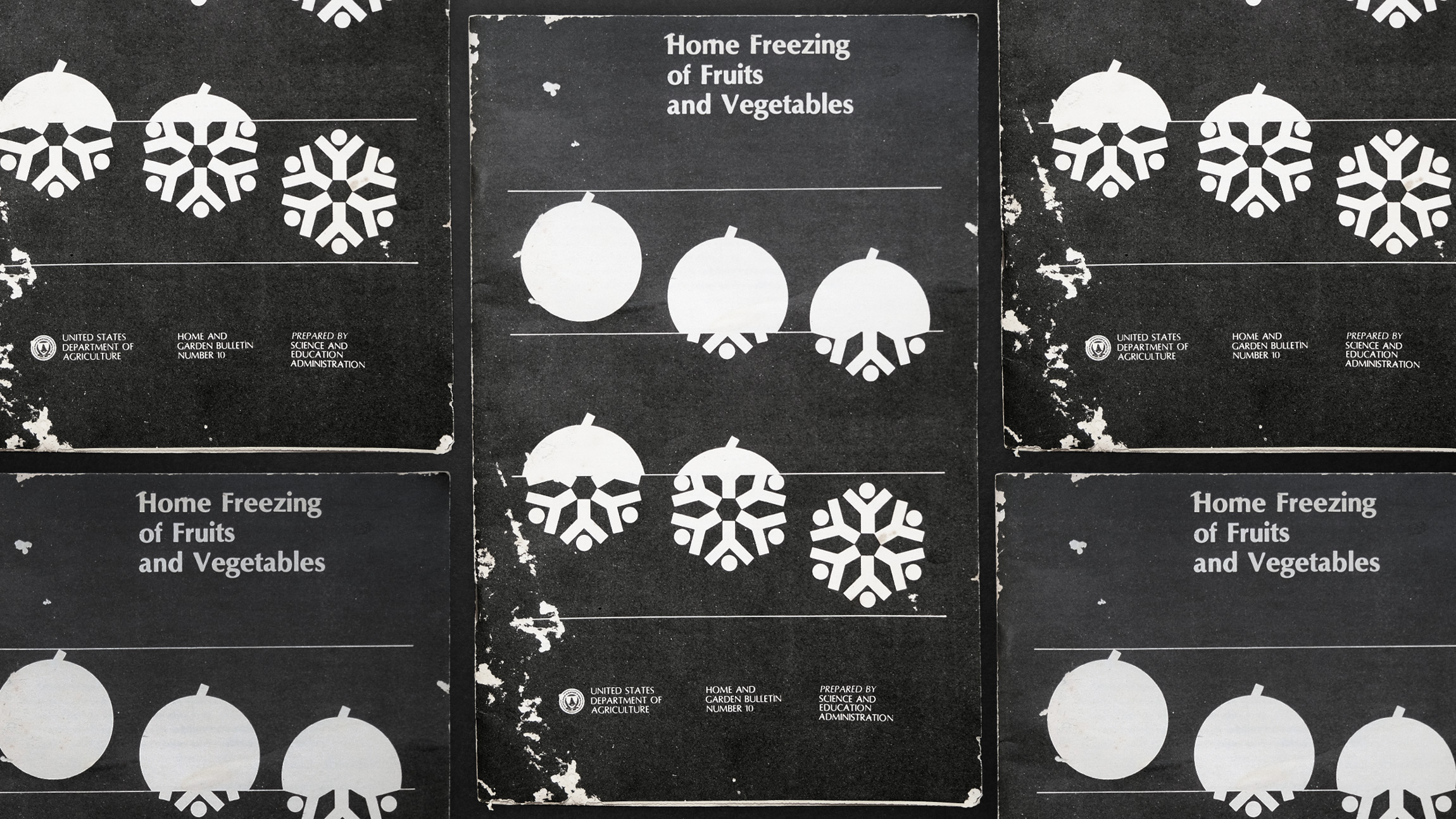Eindhoven, Netherlands’ Onomatopee Projects, with Nicolas Nova and Dislocation.org, use reflective silver ink on 255 pages of matte black paper to illustrate and explain to us what kinds of strange, wonderful, and terrifying things we might expect to encounter in the latest epoch of geological time.
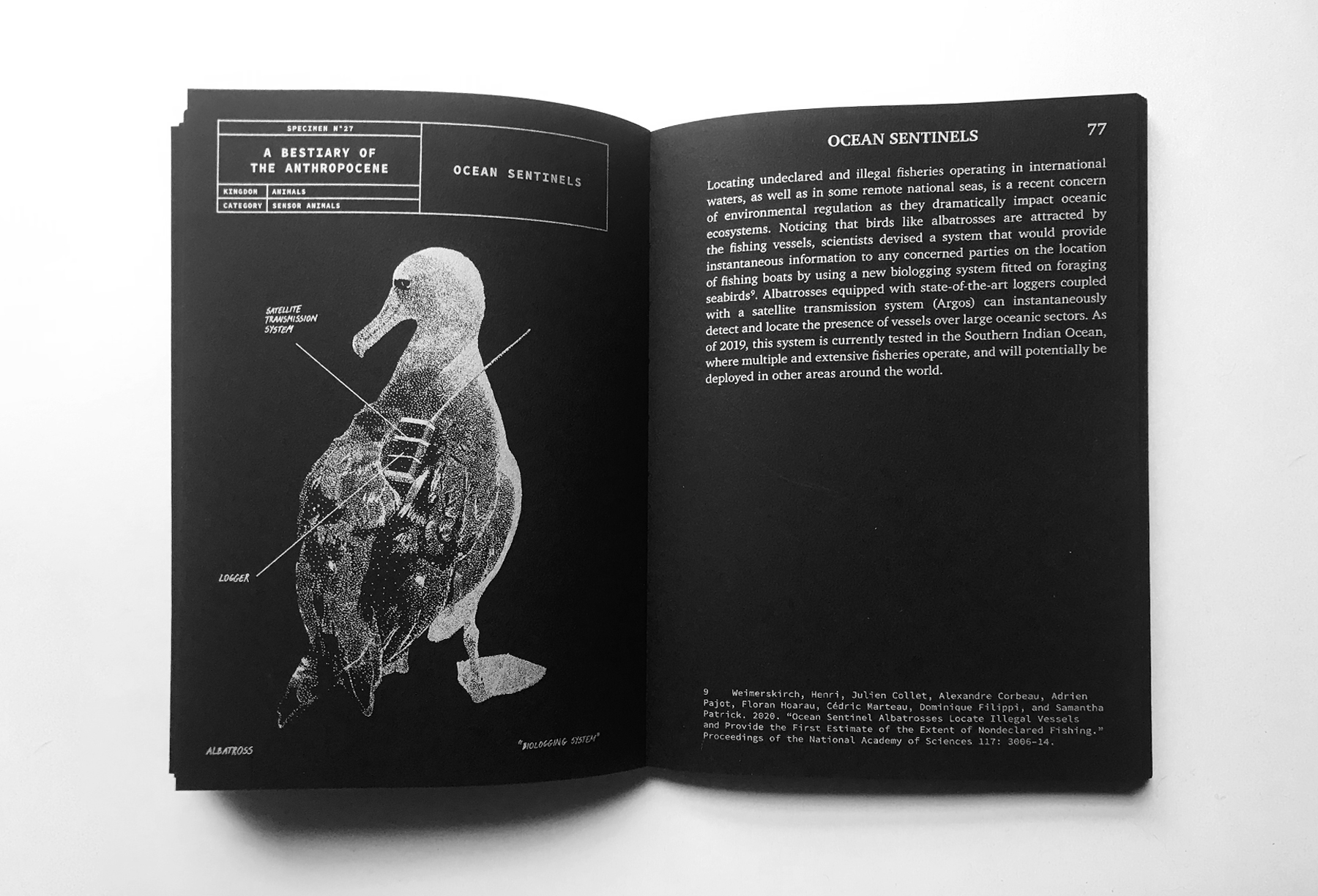
The A5 size publication, while quite thick, feels accessible and reads more like a field guide than a dense scientific paper. If you like rubbing your fingers over shimmering silver-capped embossed reliefs of predatory birds wrestling drones out of the sky, leafing through thick black pages of scientific knowledge while inhaling deeply what can only be described as the pungent metallic-like odor of darkroom chemical soup, and knowing how to tell the difference between a normal dragonfly and a cyborg dragonfly, this book may be for you.
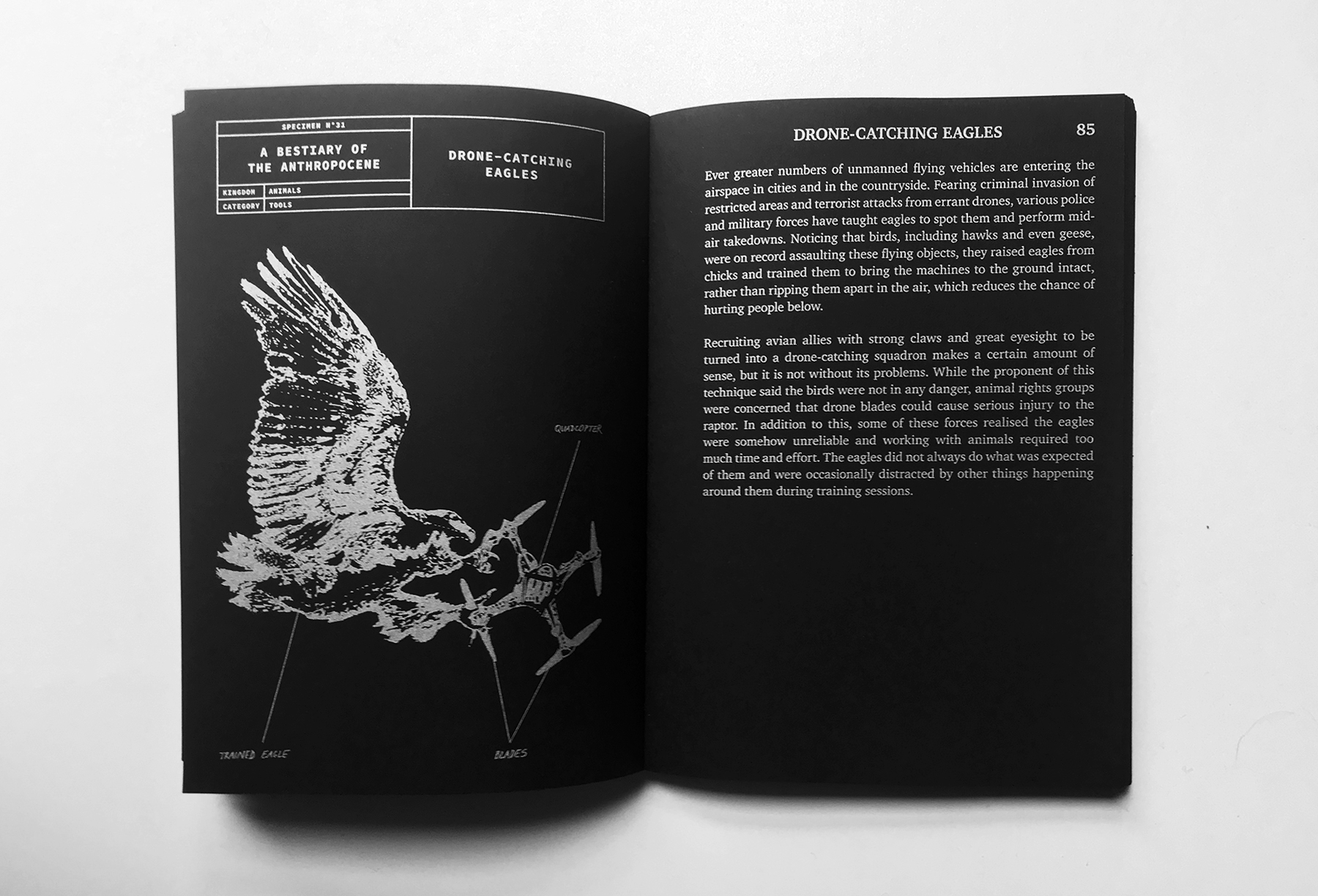
The illustrations throughout the book are delightful, consistently weird, and have a vintage science book quality about them. This feeling lends itself to the method in which they were produced. Each illustration, by Disnovation.org-affiliated designer Maria Roszkowska, began as a digital image collage of some kind. It was then turned into a hand drawing and finally digitized back into original vector art and printed with beautiful silver ink.
The eagles did not always do what was expected of them and were occasionally distracted by other things happening around them during training sessions
Nicolas Nova, A Bestiary of the Anthropocene
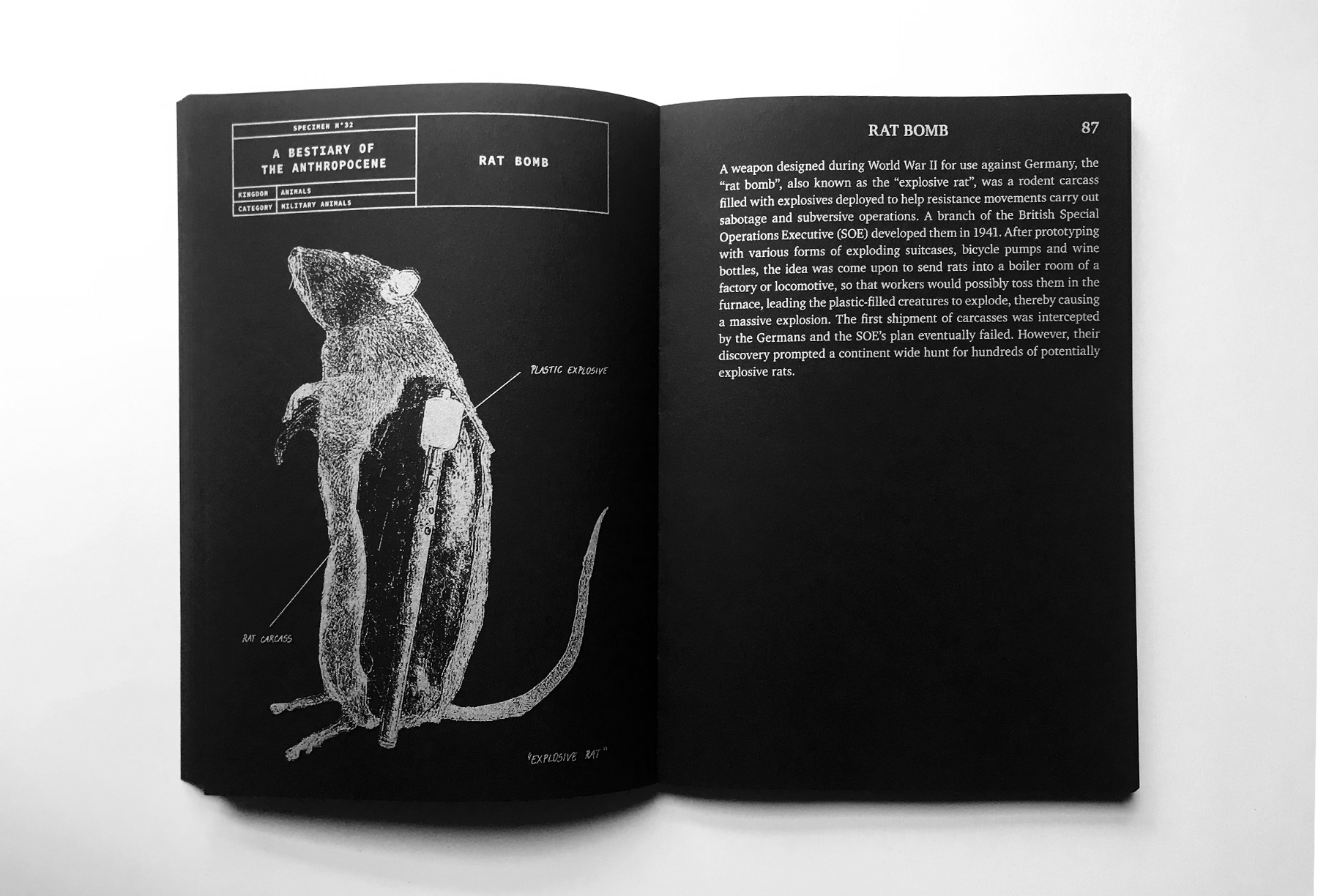
The conclusive excerpt on World War II-era rat bombs, “However, their discovery prompted a continent wide hunt for hundreds of potentially explosive rats”, somehow seems to encapsulate both the fragility of the human spirit and the essence of life within the Anthropocene at once.
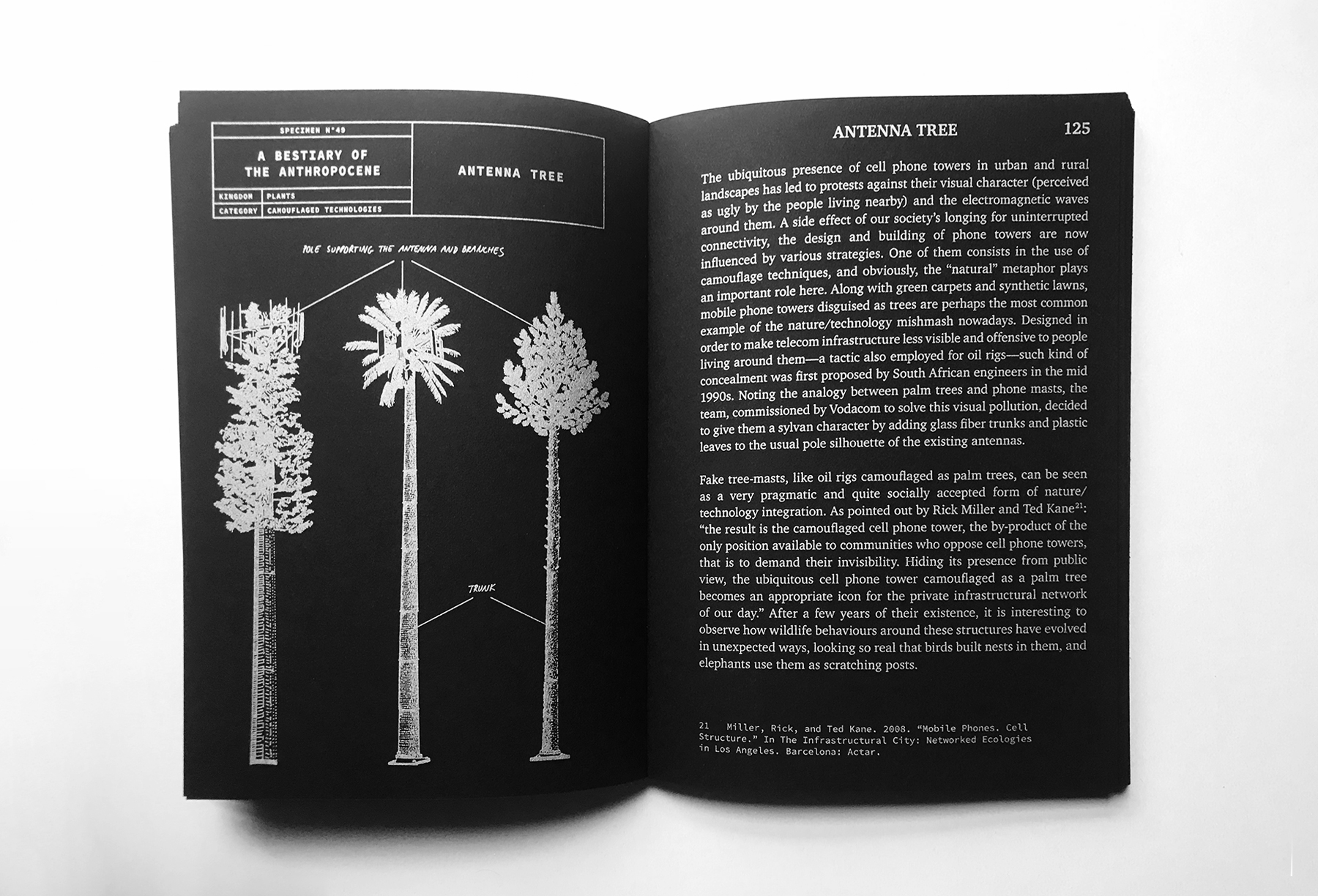
The core cases, or specimens of the book are split into categories or “Kingdoms” (“Kingdom of Minerals”, “Kingdom of Animals”, “Kingdom of Plants”, and “Kingdom of Miscellaneous”). These kingdoms are somewhat loose and playful (i.e. “Kingdom of Miscellaneous”), binding and reinforcing the book’s seminal emphasization of the hybridization of our environment.
[this bestiary] aims at encouraging us to pay attention, to perceive the nuances and assemblage of a dark ecology that arose in the last decades.
Nicolas Nova, A Bestiary of the Anthropocene
For instance, “Artificial Snow”, “5G”, and “Radioactive Mushrooms” were placed in the “Kingdom of Miscellaneous”, as they are kinds of post-natural phenomena existing somewhere between natural and artificial.

Notably, the book has a case study on SARS-COV-2 complete with a really wonderful and terrifying illustration of the corona-shaped, crown-covered profile that has been burned into all of our brains by this point in time.
Also notable is the book’s observation that while the virus itself is of zoonotic origins, the COVID-19 pandemic is a disaster product of the Anthropocene “due to our actions that contribute to weakening natural ecosystems, thus promoting the spread of pathogens.”
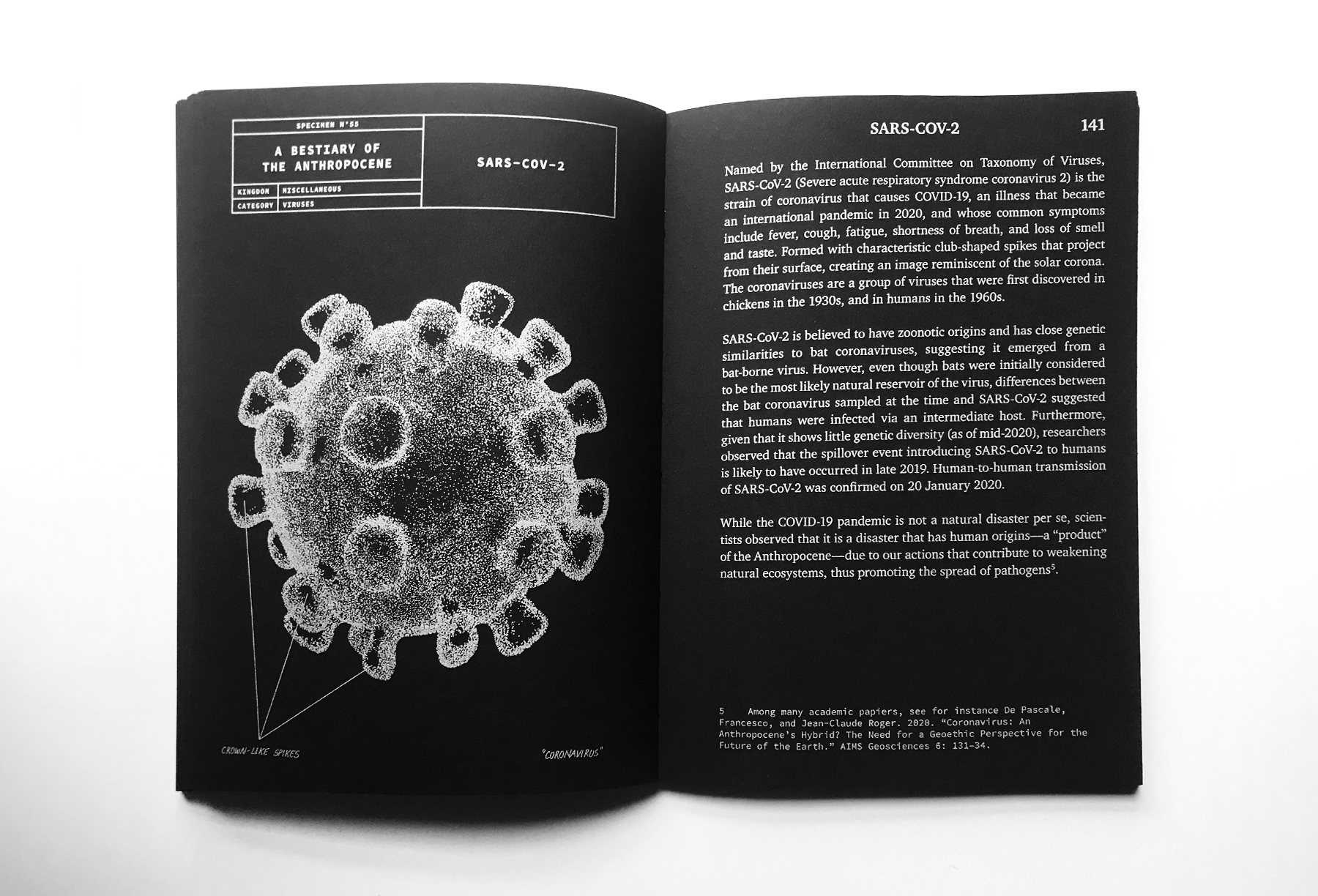
A keystone and important block of this book’s DNA lies dormant beneath the “Disclaimer” section in the back. The author invokes the right to make the book and its contents exist in the public domain. Furthermore, details on the acquisition of imagery–as found or acquired objects, reappropriated artistically beyond recognition without permission–in the name of science, freedom of expression, and not-for-profiteering, are revealed.
This is a really wonderful and refreshing approach to independent publishing and we hope to see this kind of boldness and transparency in future works of art, literature, and information sharing.
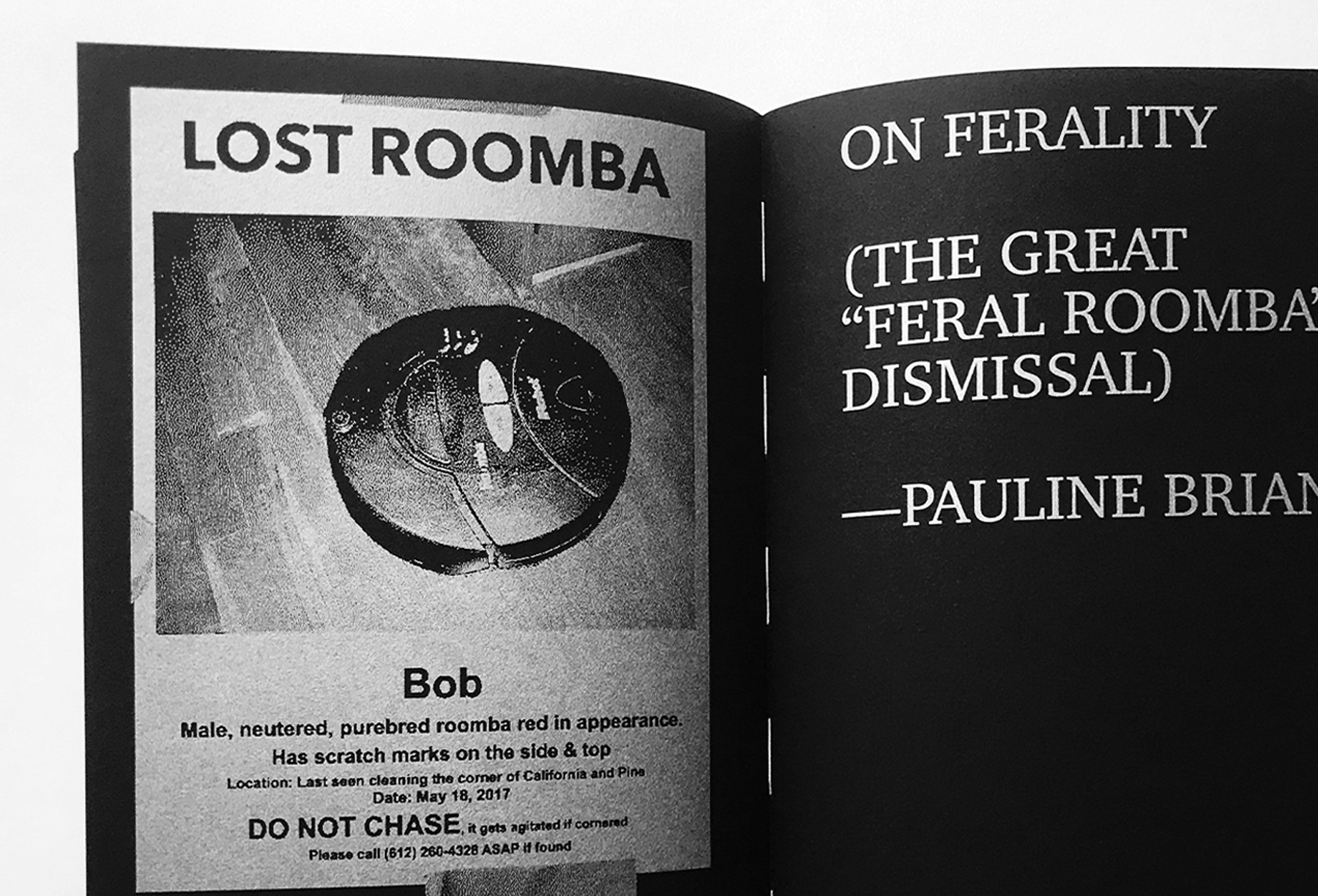
In the lengthy section dedicated to “ferality” Nicolas Nova ruminates on his love/hate fantasy with the “feralisation” (U.K. spelling) of nature and robotics. Using musings brought on by public experimentation with the feralization of Roombas (via Twitter posts and “missing Roomba” posters), he goes on to explain “Ferality allows border tempering, It interrogates the way the things are, it is possible because the feral has agency.”

‘A Feral Roomba! So Cool!’ But is it?
Nicolas Nova, A Bestiary of the Anthropocene
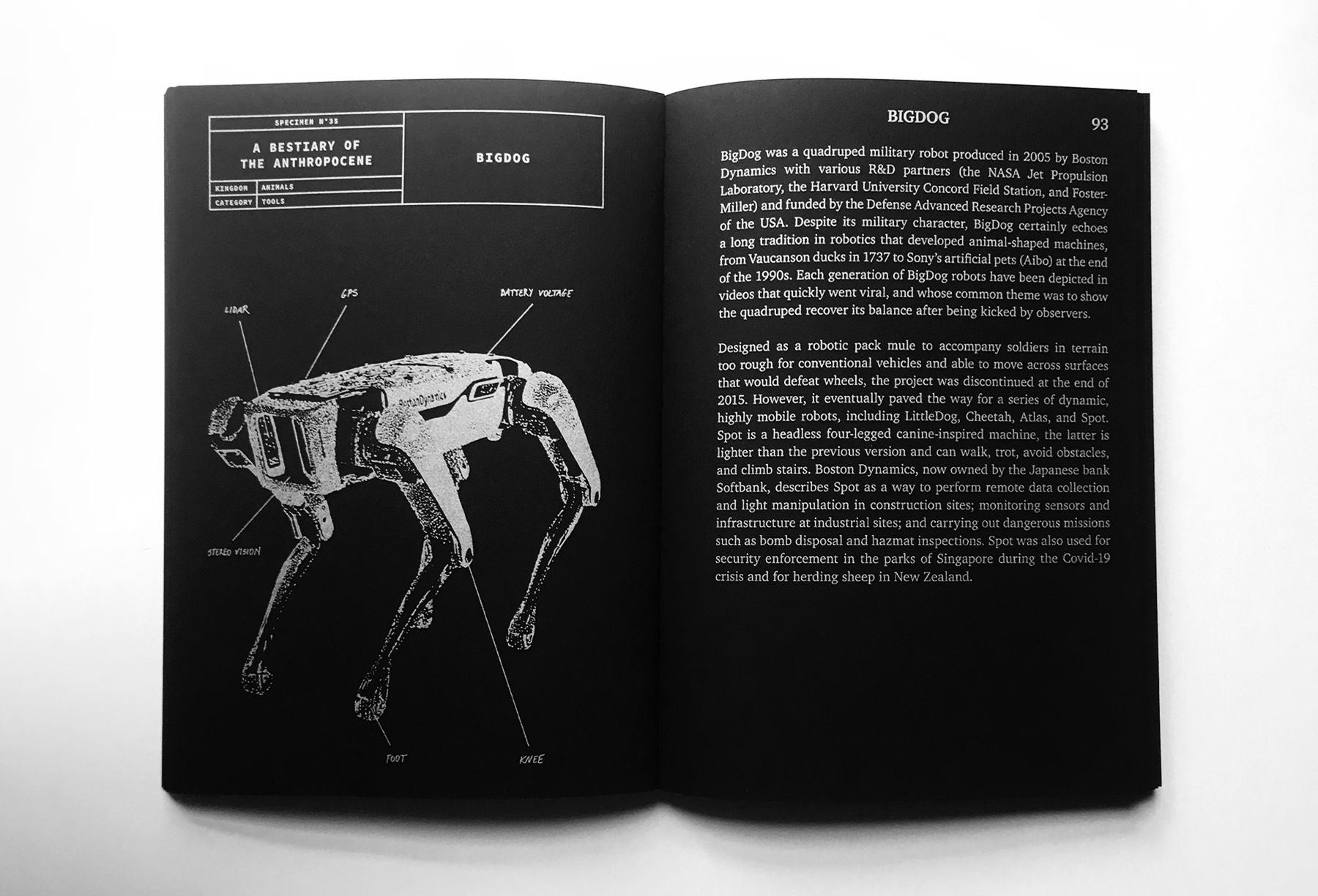
A Bestiary of the Anthropocene was published in 2021 by Onomatopee Projects, an editorially-led public gallery and print shop in Eindhoven, Netherlands. It was edited and authored by Nicolas Nova and Disnovation.org, a kind of post-growth-forward situation-developing art collective and working group. The design and wonderful illustrations were done by Maria Roszkowska.
You can purchase a copy from Onomatopee directly on their website.


